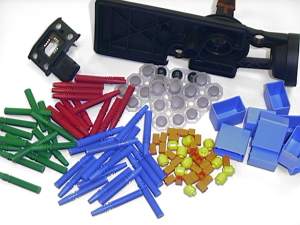 ACTIPLAS © is a plasma etching process. A low pressure, low temperature, PECVD process useful to clean and activate almost any surfaces and any materials. It can be used to enhance and facilitate gluing, bonding, painting, serigraphy and so on.
ACTIPLAS © is a plasma etching process. A low pressure, low temperature, PECVD process useful to clean and activate almost any surfaces and any materials. It can be used to enhance and facilitate gluing, bonding, painting, serigraphy and so on.
This process is not like corona treatment, which are unstable and lose their effectiveness very quickly. ACTIPLAS effect last longer, changing between storing condition and material, but its effect are there even after hours, even days in some cases. The surface tends anyway to passivate in some time but ACTIPLAS reaches very high surface tension and very high hydrophilic effect.
An effective plasma treatment it is not the application of some simple chemical but the result of years of experience and expertise. Antec Finiture S.r.l. develop and applies plasma coatings and treatments since 1999, therefore we can offer you always the best solution at the best price.
Actiplas © advantages
Actiplas © is a hydrophilic plasma treatment helpful in many applications
- Increases surface tension even over 72 mN/m
- Better paintability
- Better gluing and bonding
- Better molding between steel and rubber
Actiplas © creates active chemical groups that can create covalent bonding with other substances, this bonding are the reasons why it can enhance gluing, painting, serigraphy.
Actiplas © applications
- Automotive
- Domestic appliances
- Medical
- Optic
- Toys
- Electronics
Surface will be active for some times, hours, days, or even weeks, depending on storage conditions, substrate, weather. This is why Actiplas is easier to use instead of other activation process.
A lot of plastics (ABS, PC, PE, PEEK, PP, PA, PPS) can reach an angle contact with water lower than 20°, facilitating paints and glues adhesion.
Hydrophilic effect is not permanent, but we can work together to create a layer which will last longer, or even became permanent, of course, sacrificing some of the hydrophilic effect.
Technical data
| Water contact angle | < 20° |
| Surface tension | > 72 mN/m |
| Process temperature | 20 – 50 °C |
| Possible substrates | plastics, elastomers, metals, ceramics, glass |
| Possible chemical groups | hydroxy, amino, vinyl, silanol, thiol |





